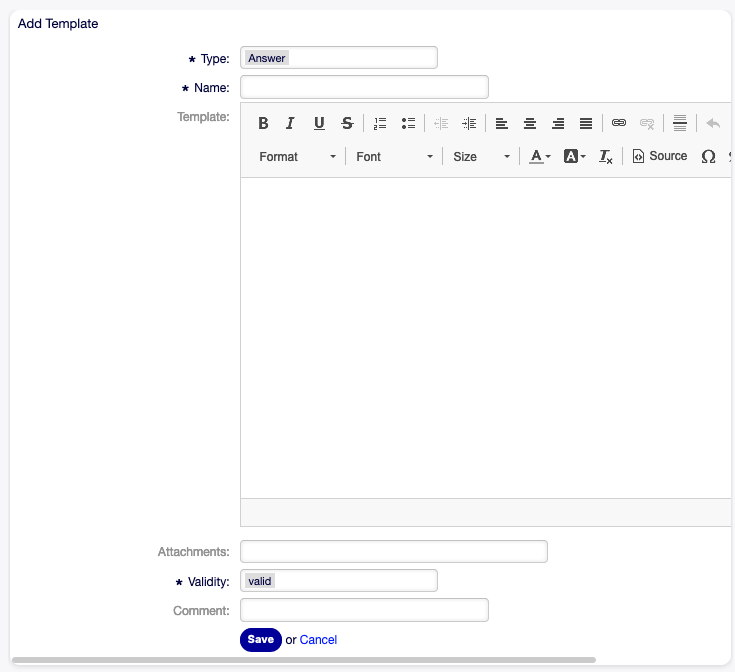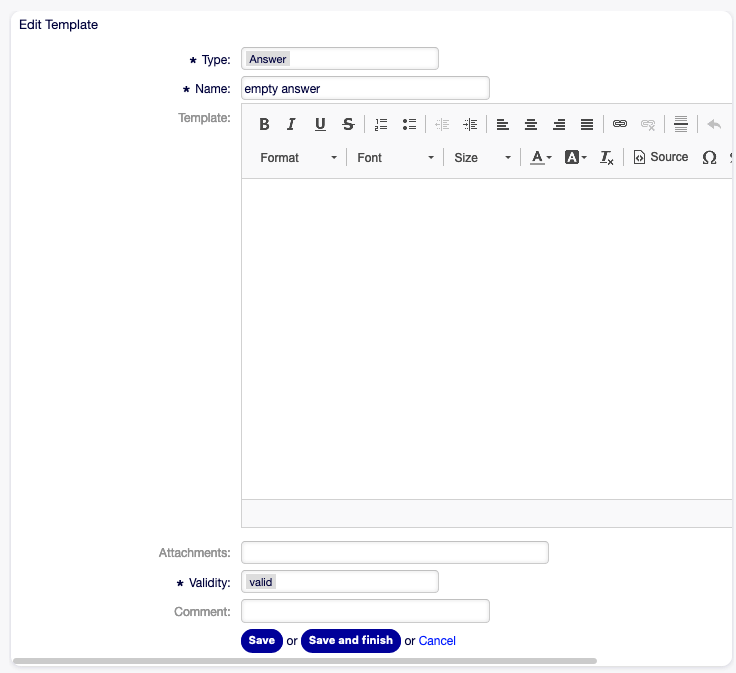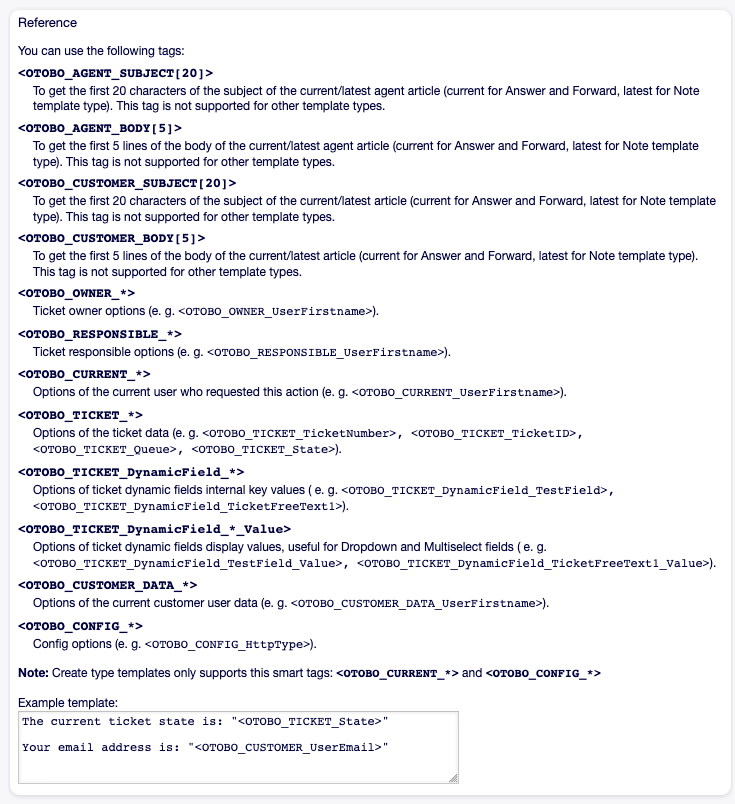Templates¶
Providing the correct and consistent answer all the time regardless of employee or knowledge-level is important to maintain a professional appearance to your customers. Additionally, speed in sending standard answers is key to wading through the masses of requests in growing service desks.
OTOBO templates offer you a variety of ways to deal with standardizing communications and help to pre-define texts so that the customer always receives the same level and quality of service from all agents.
Use this screen to add templates for use in communications. A fresh OTOBO installation already contains a template by default. The template management screen is available in the Templates module of the Ticket Settings group.

Template Management Screen
Manage Templates¶
Note
To add attachments to a template, it needs to create the attachment first in the Attachments screen.
To add a template:
- Click on the Add Template button in the left sidebar.
- Fill in the required fields.
- Click on the Save button.

Add Template Screen
To edit a template:
- Click on a template in the list of templates.
- Modify the fields.
- Click on the Save or Save and finish button.

Edit Template Screen
To delete a template:
- Click on the trash icon in the list of templates.
- Click on the Confirm button.

Delete Template Screen
Note
If several templates are added to the system, a filter box is useful to find a particular template by just typing to filter.
Template Settings¶
The following settings are available when adding or editing this resource. The fields marked with an asterisk are mandatory.
- Type *
There are different kind of templates that are used for different purposes. A template can be:
- Answer
- To be used as a ticket response or reply.
- Create
- To be used for new phone or email ticket.
- To be used for writing an email to a customer user or to someone else.
- Forward
- To be used to forward an article to someone else.
- Note
- To be used to create notes.
- Phone call
- To be used for inbound and outbound phone calls.
- Process dialog
- To be used in process management to pre-fill text of articles in user task activity dialogs.
- Name *
- The name of this resource. Any type of characters can be entered to this field including uppercase letters and spaces. The name will be displayed in the overview table.
- Template
- The body of the article added by the template.
- Attachments
- It is possible to add one or more attachments to this template. Attachments can be added in the Attachments screen.
- Validity *
- Set the validity of this resource. Each resource can be used in OTOBO only, if this field is set to valid. Setting this field to invalid or invalid-temporarily will disable the use of the resource.
- Comment
- Add additional information to this resource. It is recommended to always fill this field as a description of the resource with a full sentence for better clarity, because the comment will be also displayed in the overview table.
Template Variables¶
Using variables in the text makes it possible to personalize messages. Variables, known as OTOBO tags, are replaced by OTOBO when generating the message. Find a list of available tags stems for this resource at the bottom of both add and edit screens.

Template Variables
For example, the variable <OTOBO_TICKET_TicketNumber> expands to the ticket number allowing a template to include something like the following.
Ticket#<OTOBO_TICKET_TicketNumber>
This tag expands, for example to:
Ticket#2018101042000012